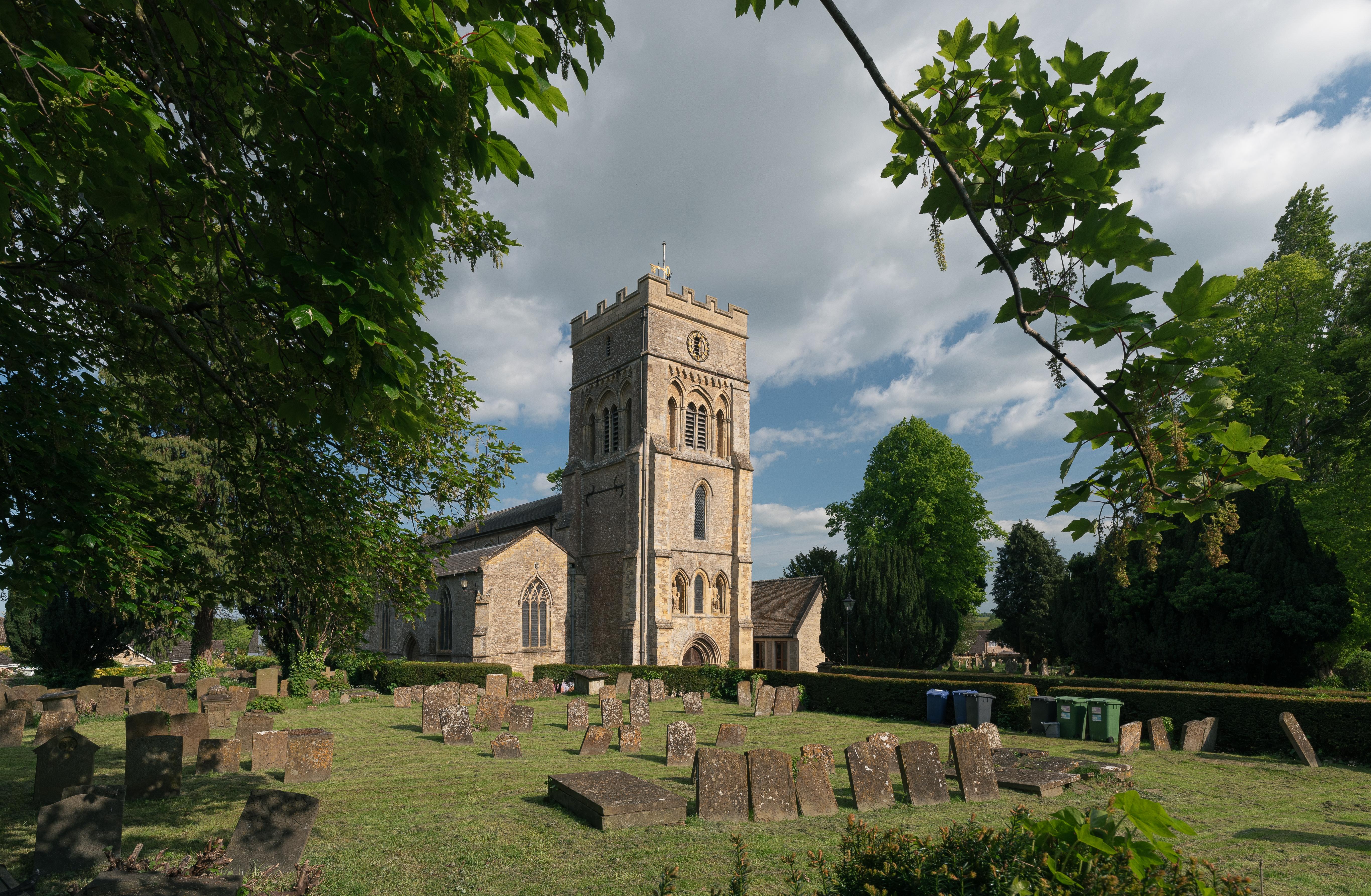St Augustine
Westbury, Northamptonshire
The church has been a part of the village since 1175 and in 2025 will be 850 years old.

For well over 800 years, people have been worshipping at St Peter's, the only Grade I listed building in our beautiful town and with the largest churchyard in the county.
Brackley, Northamptonshire
It is believed that Christians have been worshipping on the site since the 7th century. The oldest parts of the present church building are Norman and date from about 1100. The Norman church was in the shape of a cross with transepts to the north and the south of the nave. This was shorter than the present church, which now has a longer nave and chancel.
In the modern north aisle (at the east end) there is a capital of a pillar, and part of a column, which was the centre post of a stairway leading to a Rood Screen and the then chancel arch. The south door was thought to have originally opened into a porch leading to the old, narrower Norman church. Above this porch was a room used by the vicar, and possibly his wife, until the mid-thirteenth century. Above the door a blocked-up window leading to this room was visible until the extension was added, covering the window in the late 1990s.
Traces of an old scratch sundial can be found in the wall to the west of the south door frame. The west tower was added in the 13th century. Above the doorway the figures of St Peter and St Hugh, Bishop of Lincoln, may be seen. There are also the faces of a man and a dog in the carved leaves. During this period the south aisle was added. The stiff leaf decoration can be seen on the tower doorway and on the responds of the south arcade. Presumably the south transept was retained at this stage because the capital of the last pillar at the east end of the south arcade is octagonal, like those in the north aisle, whilst the others are round. It is suggested that this pillar was installed at the same time as the north aisle extension, in the 14th century. There are traces of medieval decoration on the underside of the arch leading to the old south transept at the east end of the south arcade.
Later in the 13th century, most of the Norman chancel was removed, the nave lengthened and a new chancel built. The mouldings of the chancel arch and the little arches are good examples of this Early English style.
In 1901 stained glass windows by Kempe and by a combination of Kempe and his assistant Tower were installed in the south chapel. These have recently been featured in episodes of the BBC's television show Bargain Hunt.
The most dramatic developments at St Peter's since the 14th century were opened in 1998. The church extension, built on land to the south of the church and joining via a porch area to the old Norman south door, was added to provide a church hall, kitchen and modern toilet facilities for the growing parish. In 2025, you will find a vibrant and growing congregation on Sundays which seeks to reach out to the local community with the love of Jesus.
Westbury, Northamptonshire
The church has been a part of the village since 1175 and in 2025 will be 850 years old.
Steane, Northamptonshire
Set in the gardens of Steane Park this is a rare church built in the gothic style in 1620.
Croughton, Northamptonshire
The remarkable feature of this church is the series of 14th century wall paintings which were discovered almost a century ago by Professor Ernest Tristram, the authority on such works and a professor at the Royal College of Art.